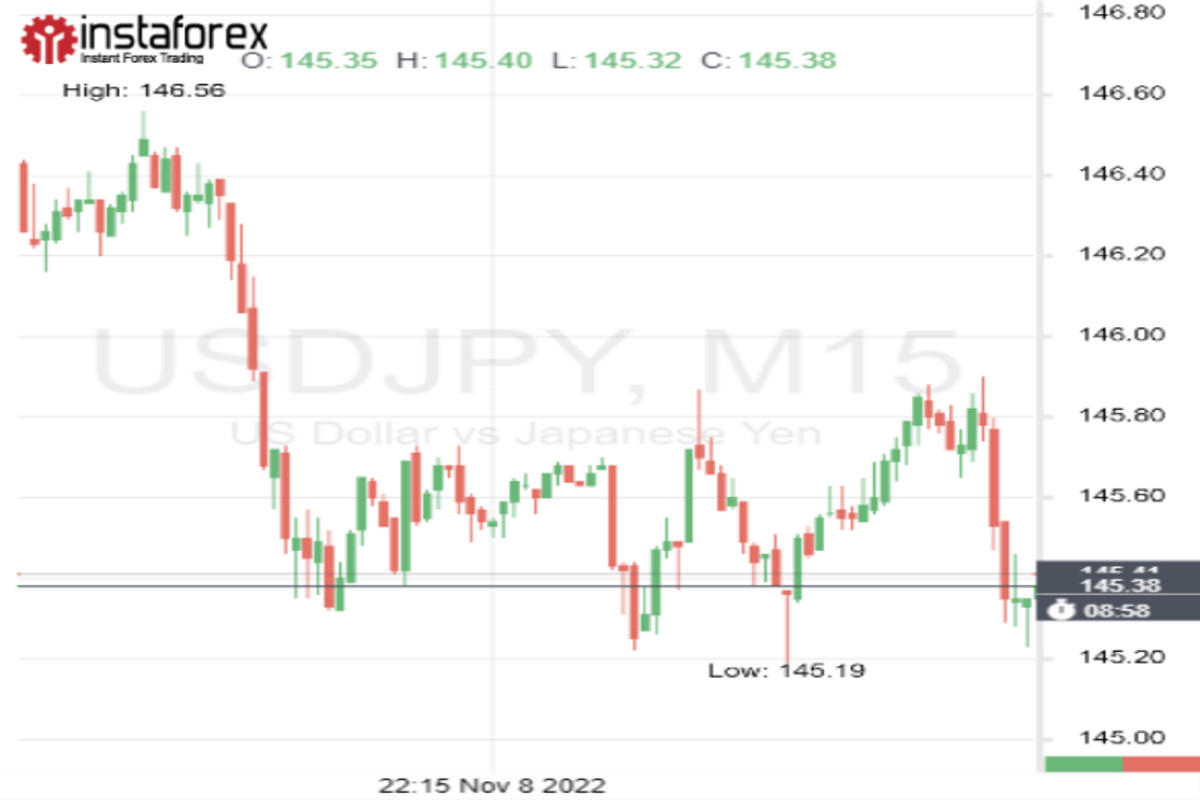
The dollar is melting like butter. Appetite for it is dwindling on growing concerns about a less hawkish Fed policy. One of the main beneficiaries of the USD decline is the yen.
JPY seizes the moment
On Wednesday night, another wave of sales covered the US currency. The USD hit multi-week lows against the euro, the Australian and New Zealand dollars, and the yen.

The wide-ranging drop in the greenback sent the DXY index further down. This week, the indicator fell by almost 0.9% and, at the time of writing, was trading near the level of 110.
The dollar's latest pullback came amid headlines related to the counting of votes in the US midterm elections.
The Republicans are now the favorites. If they do prevail, it could lead to increased political tension in America and dire consequences for the economy.
Also, increased fears about a possible slowdown in the pace of tightening of the Federal Reserve's policy continues to exert serious pressure on the greenback.
Despite the fact that last week Fed Chairman Jerome Powell assured the market of further aggressive tactics by the central bank, many traders still expect the Fed to begin to slow down due to the growing risk of a recession.
The US economy has already felt the negative impact of a tight monetary policy. Investors fear that new signs of a slowdown could force US officials to take a less hawkish course.
Such a pessimistic mood has a negative impact on the yield of 10-year US Treasury bonds. On Tuesday, the indicator plunged from more than 4.20% to 4.15%.
The sharp decline in US bond yields is a key growth driver for the Japanese yen, which is extremely sensitive to changes in this indicator.
On Wednesday morning, the JPY showed the best dynamics against the dollar among all the currencies of the Group of 10. At the time of writing, the yen has risen in price against its American counterpart by 0.7% and was at around 145.5.
What will happen next with the dollar-yen asset?
Despite the fact that the dollar has recently experienced a crisis of confidence, many analysts are confident that its bullish rally is not over yet.
"I believe that the current USD pullback is just consolidation, but not the end of the uptrend, because the Fed has not yet finished the fight against rising prices," said Bank of Singapore currency analyst Moh Siong Sim. - We will see the final reversal of the trend in the dollar only when the market is convinced that inflation has finally been defeated.
The next piece of data, which should shed light on the current level of inflation in America, will be released tomorrow. Economists expect prices to slow down from 8.2% to 8% year on year.
If the indicator falls less than the forecast, the dollar will receive a powerful impetus to climb. Sustained inflation will convince investors that the Fed still has a lot of work to do before it starts to ease its aggressiveness.
A further sharp rate hike in America is a very negative scenario for the yen, which continues to experience more pressure from the dovish Bank of Japan.
Conversely, any signs of a slowdown in Fed tightening could dampen the monetary divergence between the US and Japan, helping to further strengthen the JPY.
If Thursday's data points to a significant decline in inflation, there will be little doubt left in the market that the US central bank will move to less hawkish action soon. Such a plot twist can collapse the USD/JPY pair even more.
Technical picture for the USD/JPY pair
On Wednesday night, the dollar for the first time in almost 3 months fell against the yen below its 50-day moving average.
This again drew traders' attention to the 145.00 area. A confident break below this mark may provoke new losses, up to a drop to the critical level of 143.80.
On the other hand, if USD/JPY manages to rise above 147.00, the bearish pressure will ease.
 English
English 
 Русский
Русский Bahasa Indonesia
Bahasa Indonesia Bahasa Malay
Bahasa Malay ไทย
ไทย Español
Español Deutsch
Deutsch Български
Български Français
Français Tiếng Việt
Tiếng Việt 中文
中文 বাংলা
বাংলা हिन्दी
हिन्दी Čeština
Čeština Українська
Українська Română
Română

